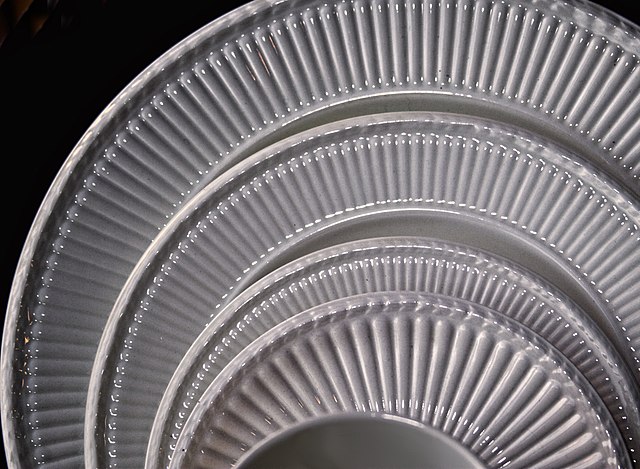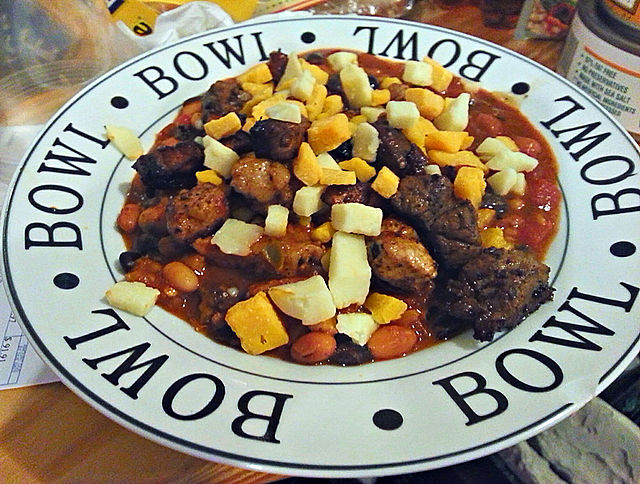A plate is a broad, mainly flat vessel on which food can be served. A plate can also be used for ceremonial or decorative purposes. Most plates are circular, but they may be any shape, or made of any water-resistant material. Generally plates are raised round the edges, either by a curving up, or a wider lip or raised portion. Vessels with no lip, especially if they have a more rounded profile, are likely to be considered as bowls or dishes, as are very large vessels with a plate shape. Plates are dishware, and tableware. Plates in wood, pottery and metal go back into antiquity in many cultures.
Chelsea porcelain botanical plate with spray of fruiting Indian bean tree; circa 1755; overall: 4 × 23.2 × 23.2 cm; Metropolitan Museum of Art
Typical Chinese plate or dish shape, with narrow lip. Jingdezhen ware, Yuan dynasty, 1271–1368
Silver-gilt plate, 1605, from the dinner service of Constance of Austria. Probably used as a charger to place other tableware on
Sizes from dinner plate (bottom of stack) to saucer (top of stack)
A bowl is a typically round dish or container generally used for preparing, serving, storing, or consuming food. The interior of a bowl is characteristically shaped like a spherical cap, with the edges and the bottom forming a seamless curve. This makes bowls especially suited for holding liquids and loose food, as the contents of the bowl are naturally concentrated in its center by the force of gravity. The exterior of a bowl is most often round, but can be of any shape, including rectangular.
Self-identified bowl performing one of the most common functions of bowls: the serving of food (in this case, chili)
Romanian large bowl from the Middle Bronze Age; c. 1550 BC; burnished earthenware; overall: 15.5 × 31.3 cm; Cleveland Museum of Art (U.S.)
Lakh - millet flour porridge in communal platter served topped with sweetened fermented milk (sow). Senegal, West Africa.
Large copper bowl. Dhankar Gompa








